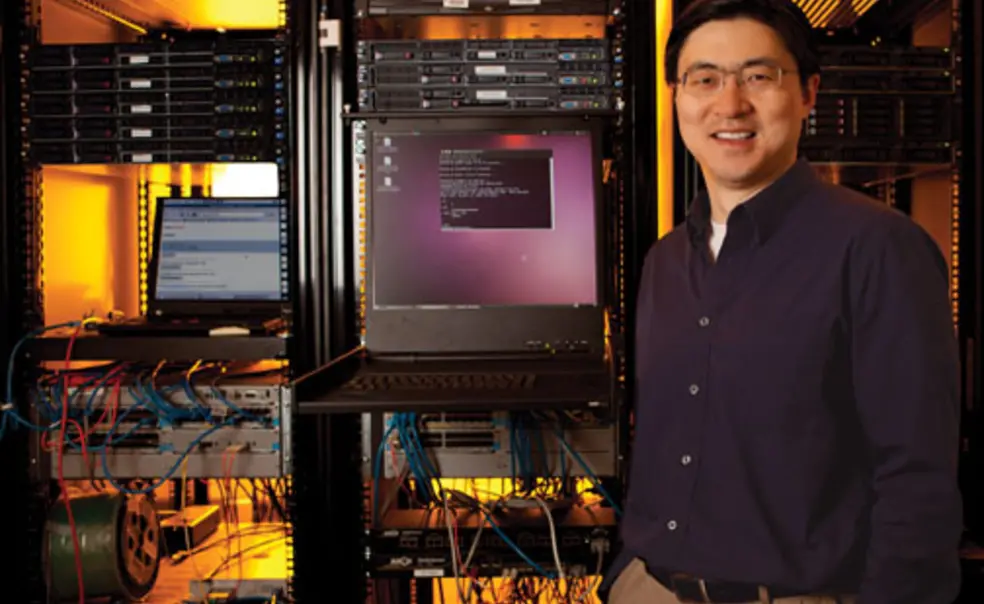Electrical Engineering: Smarter Smart Phones
Mung Chiang helps clear congestion on the information superhighway
There are roughly 6 billion active cellphones worldwide, according to the United Nations, and the volume of emails, videos, and Web searches on those phones is putting a strain on networks. Electrical engineering professor Mung Chiang is trying to alleviate the information traffic jam.
Through a blend of innovative mathematical analysis and field research, Chiang develops ways to strengthen and simplify the design of wireless networks. One of his latest projects is the creation of time-dependent pricing algorithms to help cellphone carriers clear congestion. The algorithms discourage use during high-traffic periods by offering lower prices for off-peak periods.
Today, companies must build networks capable of handling short bursts of heavy usage — on Christmas Day or during national emergencies, for example — while much of that capacity sits unused the rest of the time. As pricing increasingly is usage-based, consumers worry about cost, mobile-data operators worry about profits, and content providers worry that consumers will “think twice before they access content,” Chiang says. “We believe there’s a win-win-win if you do smart data pricing” for all parties.
Chiang’s work “links the worlds of theory and practice,” says Subra Suresh, former director of the National Science Foundation, which in March selected Chiang to receive the $1 million Waterman Award, given annually to an outstanding researcher who is 35 or younger.
Chiang and the members of his lab ran a field trial with 10 people recruited in Princeton, and conducted surveys in which more than half of respondents said they would be willing to wait three to five hours for file downloads if it meant they could pay less. Participants were most willing to delay using social networks and viewing videos.
Another discovery was the significance of color-coded icons — alongside pricing information — that encourage delays in usage. The lab tested two indicators — green for the lowest price, yellow for the second lowest — with a discount for green of just 1 percent more than for yellow. The researchers observed a statistically significant increase in demand during the green periods, indicating that small fluctuations in price had a much larger impact on user behavior when they were denoted by both colors and numbers, instead of by numbers alone.
“How you show people prices makes a vast difference,” says Carlee Joe-Wong ’12, a graduate student working with Chiang.
Chiang’s group recently spun off a startup company, DataMi, to commercialize its pricing algorithms. Its first product, DataWiz, tracks when, where, and how a user consumes mobile data, and provides customized alerts that warn the user against exceeding a monthly data cap.












No responses yet